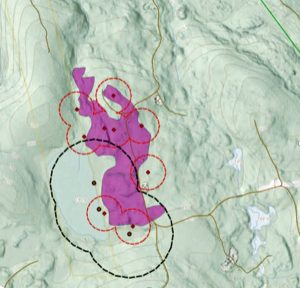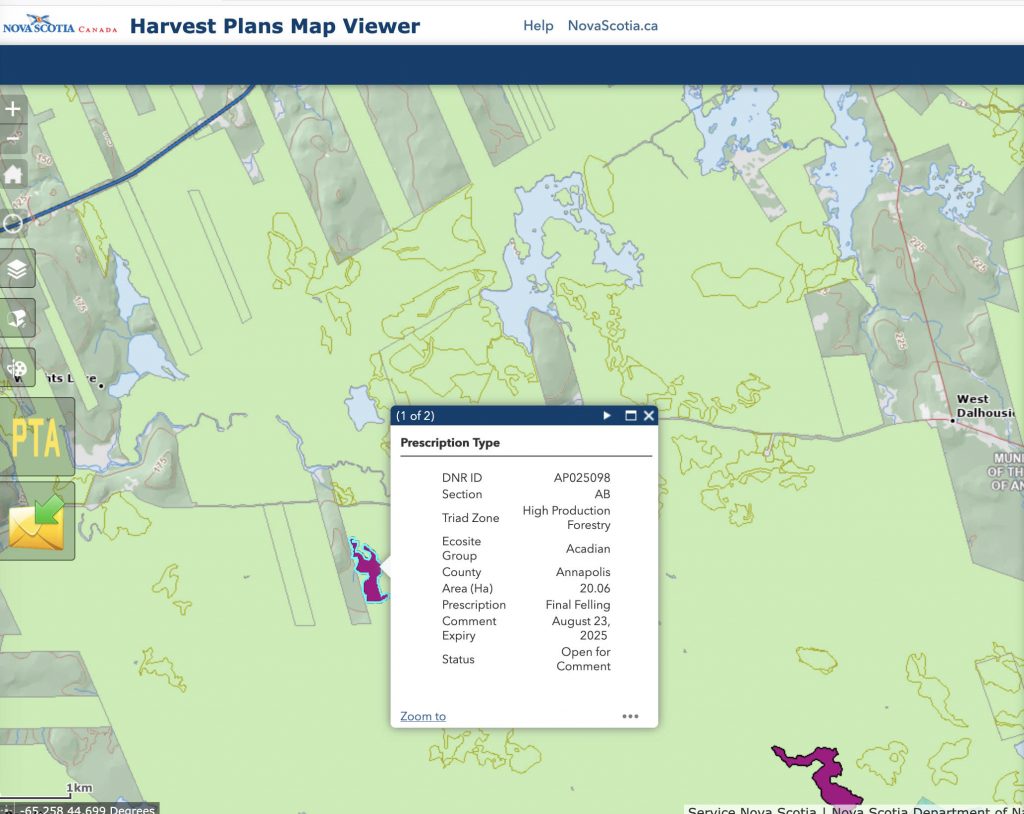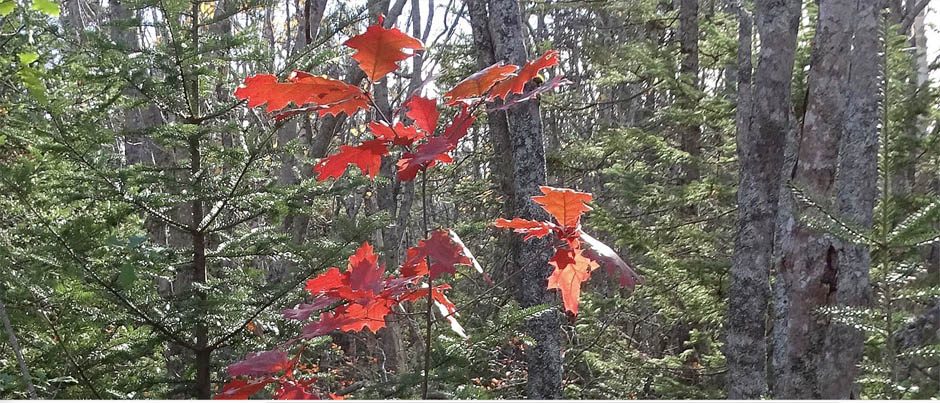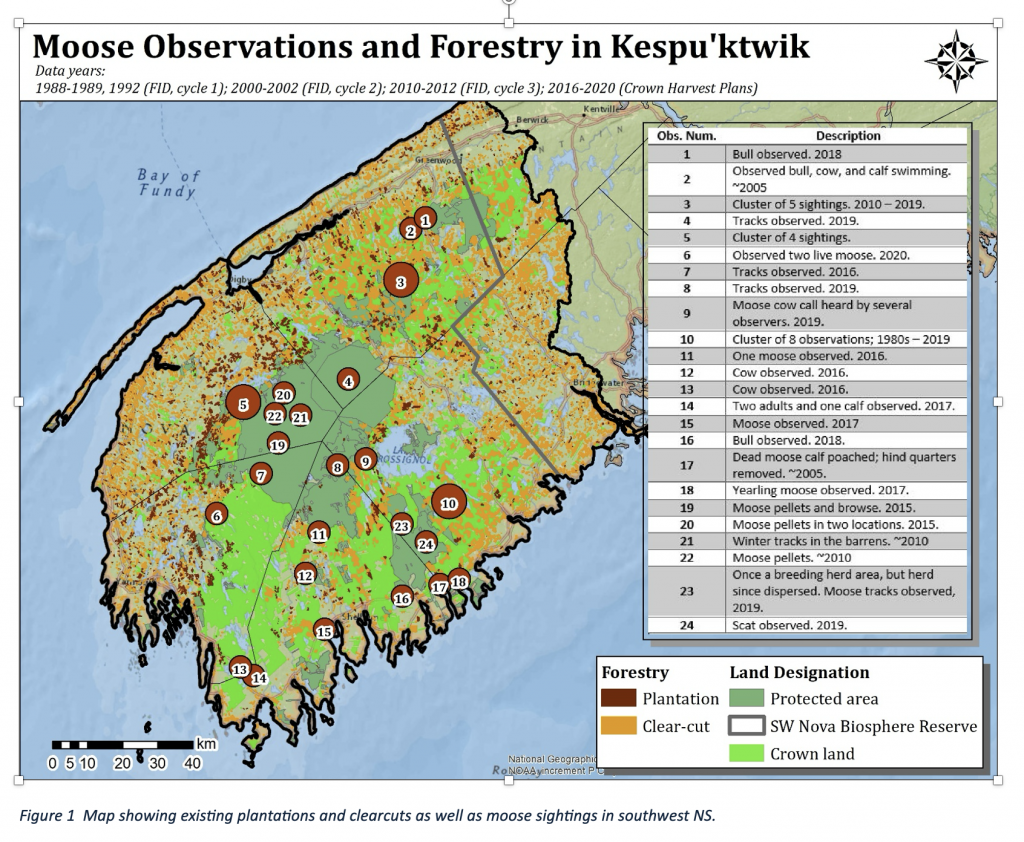Write the Citizen Scientists:
Aug 8, 2025
To: Honourable Tory Rushton, Minister of Natural Resources, Nova Scotia
Topic: Stop the clock on all harvest approvals
Dear Minister Rushton,
Please pause all harvest approvals on crown land until the woods are open to the public again.
Why? Because formal opportunity for the public to comment on proposed harvest plans is required as part of DNR’s Integrated Resource Management process for approving harvest plans. All comments made on a specific harvest plan are included in the approval documents for that plan. In order to gather these comments, harvest plans are posted on the Harvest Plan Map Viewer. The public is given 40 days to comment.
As of August 5th, the public cannot access Crown land forests. This makes it impossible to visit the plan areas to gather the site specific data that is requested. As a result, the clock for each 40 day comment period must be stopped as of August 5th. It should be restarted when the woods are open to the public.

Block APO25098 with locations of Black Ash (requiring 200 m buffers) and Species-at-Risk lichens (requiring 100 m buffers) identified by Citizen Scientists of SW Nova Scotia
As an example of the critical information the public provides that DNR’s own team failed to identify, consider AP025098. This 20 ha site just west of the proposed Goldsmith Lake Wilderness Area was posted on the HPMV on July 14, 2025. The harvest plan DNR put up for approval calls for ‘final felling’ ie clearcutting of this site. The site would be designated for High Production Forestry, a biodiversity destroying future of forest management and short rotation clearcutting. The period for public comment ends on August 23rd.
Fortunately, members of the Citizen Scientists of Southwest Nova Scotia visited the site before the woods closure. They identified 3 endangered Black Ash (200m buffers) and 9 species at risk lichens (100m buffers) that would be impacted by the proposed harvest plan. As you can see from the attached map of AP025098, if DNR’s plan for this area had been approved, clearcutting would have devastated 12 species at risk that DNR’s IRM team missed.
So please, stop the clock for comment periods until the woods reopen.
Sincerely,
Nina Newington
Citizen Scientists of Southwest Nova Scotia
Related
Letter from Donna Crossland to Minister Rushton, Aug 18, 2025:
| Dear Minister Rushton: I respectfully request that the 40-day comment period for proposed Crown land harvests, including High Production Forestry (HPF), be extended to account for the current woods closure.When the public is prohibited from entering the woods due to high fire risk, we are unable to visit proposed harvest sites and therefore cannot provide meaningful input within the allotted 40 days. This concern is heightened by the large number of new harvest plans recently posted. Public input is a critical step in the government’s approval process. As outlined in the Phase 2 Guidance for Implementation for HPF (DNR 2023), field verifications are conducted largely by licensees, with limited on-site verification by government biologists. This creates a real risk that biodiversity concerns may be overlooked, despite being an over-arching priority. HPF proposals in particular warrant greater scrutiny, as they represent a permanent conversion of forest sites to plantations under the Triad framework. More than 40 parcels (~2,270 ha) are currently proposed for HPF, yet the public is unable to access them. Such conversions permanently alter soil, flora, fauna, and ecosystem function, underscoring the need for both oversight and fair opportunity for public access to inform decision-making. Drought and recent fires have currently heightened concerns of accelerated climate warming; adding to existing uncertainties regarding the economic viability of plantation forestry. ‘Final fellings’- clearcuts releases substantial carbon from forest soils, despite replanting with seedlings. Climate impacts were not integrated into early discussions on the Triad by Dr Seymour and other experts, for which I also played a role during the Independent Forestry Review. We now have a clearer understanding that plantation forestry contributes to net CO₂ emissions. Moreover, plantations are highly climate-sensitive and fire-prone, further jeopardizing their long-term economic viability. In keeping with the Triad framework, a more prudent approach to High Production Forestry may be to refurbish existing plantations and thoroughly assess their economic feasibility before permanently converting more forest. Figure 1, a map of moose observations, highlights the extent of plantations and clearcuts already present in southwest Nova Scotia. It would also be reasonable to prioritize placing new plantations within the many existing clearcut areas. In light of rapid climate warming, experts (Climate Forestry Committee 2025) increasingly emphasize the need to “keep forests as forests.” I respectfully request that you to extend the comment period to ensure compliance with the public input requirements of the harvest planning process. Thank you for your time, Donna Crossland, MSc (Forestry) Climate Forestry Committee. 2025. https://harvardforest.fas.harvard.edu/publications/pdfs/ClimateForestryCommitteeReport_ 2023.pdf Department of Natural Resources. 2023. High production Forestry in NS: Phase 2 Guidance for Implementation. ISBN: 978-1-77448-432-6 |

Harvest Notice for AP025098 on the Harvest Plan Map Viewer
Lichen Camp Day 114
“Well, faced with the province’s decision to close the woods at 4pm today, announced at 1pm, we needed to move fast to take down Lichen Camp and we did…”
In the News – Wildfire
Page on this website
Fire Ecology & Fire Management
Page on this website

